DACF Home → Bureaus & Programs → Maine Forest Service → Forest Health & Monitoring → Invasive Threats to Maine's Forests and Tree → Elongate Hemlock Scale, Fiorinia externa
ELONGATE HEMLOCK SCALE
Fiorinia externa
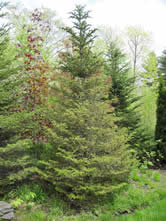
Alternate name: Fiorinia scale, Abbreviated Name: EHS
Hosts: Hemlock and fir are primary hosts. Spruce is also a common host. Several other conifers are secondary hosts, although these are usually infested only in the presence of heavy scale populations on primary hosts. Pines are not affected.
Distribution in US: South to Georgia and South Carolina, west to Ohio, Michigan and Minnesota and, north to southern New York and New England (including southern NH and ME).
Known populations in Maine: map (PDF | 2.36 MB)
Infestations of elongate hemlock scale on planted trees have been found from Kittery to Mount Desert. To date, forest infestations in the absence of planted trees have only been found in Kittery and Frye Island. It is very probable that elongate hemlock scale is established in Maine's forests outside of these areas.
Towns with known infestations:
County Town EHS Status Cumberland Cape Elizabeth, Casco, Freeport, Portland, Scarborough, Yarmouth known on planted trees Cumberland Brunswick, Frye Island, Gorham, Falmouth moved from planted trees, now established in forest Hancock Mount Desert moved from planted trees, now established in forest Hancock Sedgwick known on planted trees Sagadahoc Bath, Topsham known on planted trees York Kittery widely established in forest York Berwick, Kennebunk, Kennebunkport, Ogunquit, Old Orchard Beach, Saco, Wells, York known on planted trees
Where to look: Planted hemlock, fir and spruce. Planted and natural hemlock in areas affected by hemlock woolly adelgid or near detections of elongate hemlock scale.
Field Characteristics (See Photos Below): Yellow spots on foliage apparent on the upper surfaces of the needles. Foliage of more heavily infested trees will have a dirty appearance from a distance. Crowns may be thin. Female scales are covered by a parallel-sided, yellowish-brown waxy coating. Males, by a white, elongate coating. Crawlers and adult males are tiny, yellow, translucent and soft bodied. Crawlers are present during the warmer months of the year. Presence of crawlers and winged males can be determined by jarring infested foliage over a piece of petroleum jelly coated dark paper.
NOTE: Detections of elongate hemlock scale have often been reported during the last week of August. The insect may be more noticeable at that time due to the length of time it has been feeding over the course of the growing season. It appears to be a good time of year to check your trees for this pest.
Waxy Buildup Apparent from a Distance in Late Summer/Early Fall (pictured below on fir)
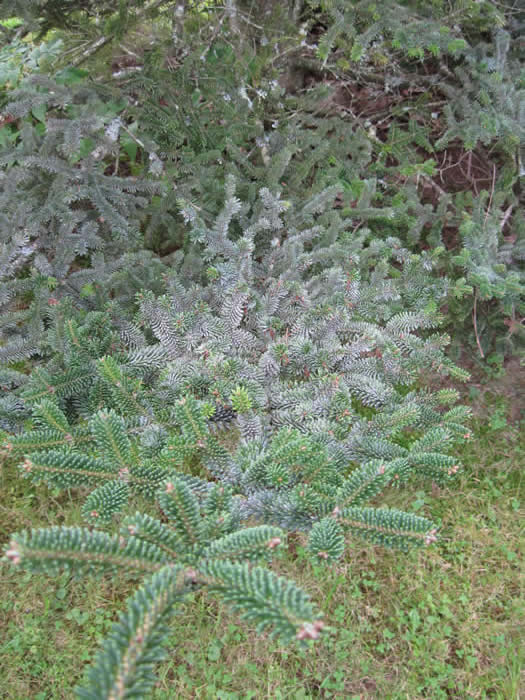
Photos: More photos can be found at: http://www.invasive.org/browse/subthumb.cfm?sub=304.
Elongate hemlock scale on hemlock needles:
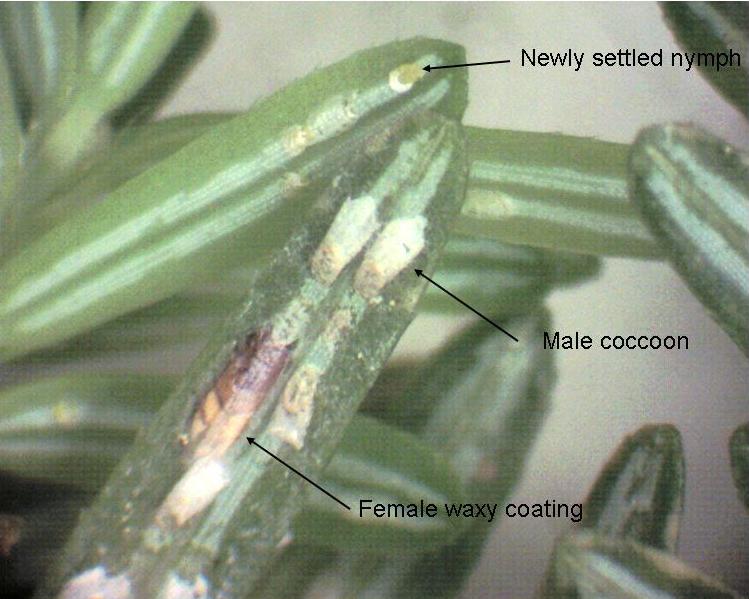
Elongate hemlock scale on hemlock (left, middle (adelgid circled)) and fir (right):
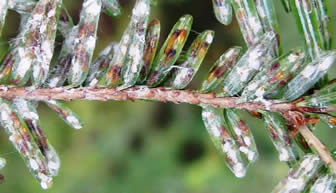
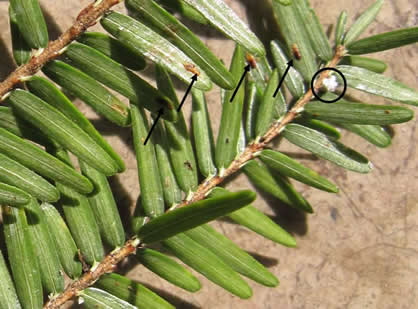
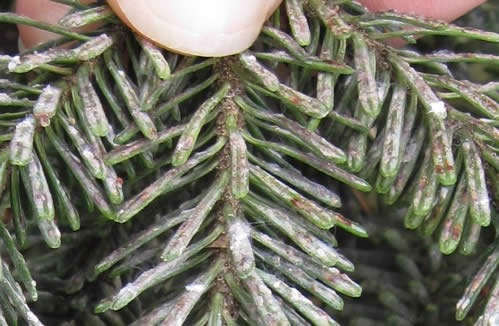
Needle discoloration on hemlock (left) and fir (right):
Note: other pathogens, pests and processes will cause needle yellowing. Look for scale coverings on the needle undersides if yellowing is apparent on the upper surfaces of the needles.
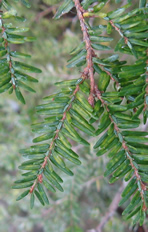
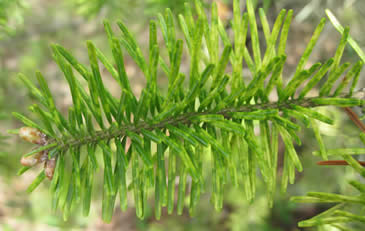
Crawlers (left) and adult males (right, only winged form):
Note: The insects pictured below are trapped in petroleum jelly.
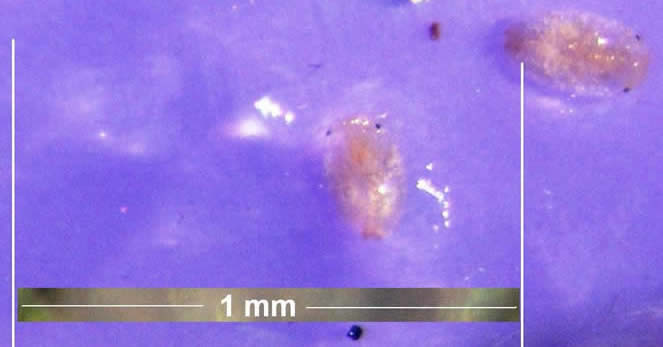
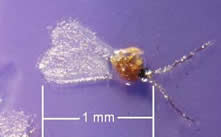
Crawlers (~0.1 to 0.2 mm)